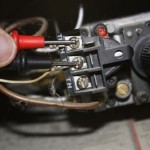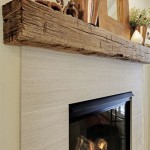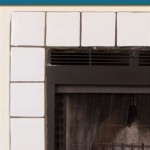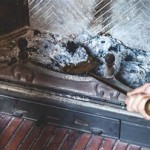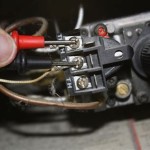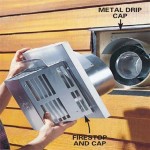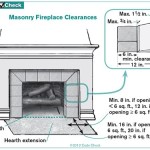Modular Outdoor Fireplace Kits: A Comprehensive Guide
Outdoor fireplaces have evolved from simple fire pits to sophisticated design elements that enhance the ambiance and value of outdoor living spaces. Modular outdoor fireplace kits represent a popular and efficient way to add this feature to a patio, deck, or garden. These kits offer a blend of aesthetic appeal, ease of installation, and customizable options, making them accessible to a wide range of homeowners. Understanding the various aspects of modular outdoor fireplace kits, from their components to installation considerations, is crucial for making an informed decision and achieving the desired outcome.
A modular outdoor fireplace kit typically comprises pre-fabricated components designed for easy assembly. These components often include firebox sections, chimney pieces, and facing materials. The modular design allows for a degree of customization in terms of size, shape, and style. The use of durable materials, such as concrete, stone, or metal, ensures longevity and resistance to the elements. This approach simplifies the construction process, reducing the need for extensive on-site building and specialized masonry skills.
The increasing demand for outdoor living spaces has fueled the popularity of these kits. Homeowners are seeking ways to extend their living areas beyond the confines of the house and create inviting environments for relaxation and entertainment. An outdoor fireplace is a focal point that provides warmth, light, and a sense of coziness, transforming a simple outdoor area into a welcoming gathering space. Moreover, a well-designed outdoor fireplace can significantly enhance the aesthetic appeal of a property, potentially increasing its resale value.
Advantages of Modular Outdoor Fireplace Kits
Modular outdoor fireplace kits offer several distinct advantages over traditional, custom-built fireplaces. These advantages contribute to their popularity and make them a viable option for many homeowners.
One of the primary benefits is the ease and speed of installation. Because the components are pre-fabricated and designed to interlock, the assembly process is significantly faster and less labor-intensive than constructing a fireplace from scratch. This can translate into substantial cost savings, as homeowners may be able to install the kit themselves or hire a contractor for a shorter period. Detailed instructions and readily available support from manufacturers and retailers further simplify the installation process.
Cost-effectiveness is another significant advantage. Pre-fabrication allows for economies of scale, reducing the overall cost of materials and labor compared to a custom-built fireplace. The standardized designs and components also minimize waste and reduce the potential for errors during construction, further contributing to cost savings. The predictable cost structure of a modular kit makes budgeting and planning easier for homeowners.
Modular kits also offer a degree of design flexibility. While the basic structure is pre-determined, homeowners can often choose from a variety of facing materials, such as natural stone veneers, brick, or stucco, to match their existing landscaping and architectural style. Some kits also allow for customization of the firebox size and chimney height, providing further options for personalization. This flexibility allows homeowners to create an outdoor fireplace that complements their individual tastes and preferences.
Material Considerations and Durability
The selection of materials used in a modular outdoor fireplace kit is crucial for ensuring its durability, safety, and aesthetic appeal. The materials must be able to withstand exposure to the elements, including extreme temperatures, moisture, and UV radiation.
Concrete is a common and versatile material used in the construction of modular fireplace kits. Concrete is durable, fire-resistant, and relatively inexpensive. It can be molded into a variety of shapes and textures, allowing for a wide range of design options. Concrete kits are often reinforced with steel or other materials to enhance their strength and resistance to cracking. The use of high-quality concrete mixes is essential for ensuring the long-term performance of the fireplace.
Stone is another popular choice for facing materials. Natural stone veneers, such as flagstone, limestone, or granite, add a touch of elegance and sophistication to an outdoor fireplace. Stone is inherently durable and weather-resistant, making it an excellent choice for outdoor applications. The natural variations in color and texture of stone create a unique and visually appealing finish. However, stone veneers can be more expensive than other facing options.
Metal, particularly stainless steel, is often used for components such as the firebox and chimney. Stainless steel is highly resistant to corrosion and can withstand high temperatures. It is also relatively lightweight and easy to work with, making it a practical choice for these critical components. The use of high-grade stainless steel is essential for ensuring the longevity and safety of the fireplace.
The type of fuel used in the fireplace also influences the material choices. Wood-burning fireplaces require more robust materials to withstand the intense heat and potential for sparks and embers. Gas-burning fireplaces, on the other hand, may allow for the use of lighter-weight materials.
Installation Process and Safety Considerations
The installation of a modular outdoor fireplace kit is generally straightforward, but it is essential to follow the manufacturer's instructions carefully and adhere to all relevant building codes and safety regulations. Proper installation is crucial for ensuring the safety and performance of the fireplace.
The first step in the installation process is to prepare the site. This typically involves clearing the area, leveling the ground, and creating a stable foundation. A concrete pad is often recommended to provide a solid base for the fireplace. The size and thickness of the concrete pad will depend on the size and weight of the fireplace kit.
Next, the firebox sections are assembled according to the manufacturer's instructions. This usually involves interlocking the sections and securing them with mortar or adhesive. It is important to ensure that the firebox is properly aligned and level before proceeding to the next step.
Once the firebox is assembled, the chimney sections are added. The chimney must be properly installed to ensure adequate draft and prevent smoke from entering the surrounding area. The height of the chimney will depend on the location of the fireplace and the surrounding structures. Building codes often specify minimum chimney heights to ensure proper venting.
Finally, the facing materials are applied to the exterior of the fireplace. This can involve adhering stone veneers, brick, or stucco to the surface. It is important to use the appropriate adhesives and mortars for the chosen facing materials. The facing materials should be applied in a way that creates a seamless and aesthetically pleasing finish.
Safety considerations are paramount during the installation process. It is essential to wear appropriate safety gear, such as gloves and eye protection, when working with concrete, stone, and adhesives. All electrical and gas connections must be made by qualified professionals. It is also important to ensure that the fireplace is located a safe distance from combustible materials, such as trees, shrubs, and buildings.
Regular maintenance is essential for ensuring the long-term safety and performance of the fireplace. This includes cleaning the firebox and chimney regularly to remove ash and debris. Inspecting the fireplace for cracks or damage and making necessary repairs is also important. Following the manufacturer's recommendations for maintenance will help to prolong the life of the fireplace and prevent potential hazards.
Local building codes and regulations should always be consulted before installing an outdoor fireplace. These regulations may specify requirements for setbacks, chimney heights, and fire safety. Obtaining the necessary permits is essential for ensuring that the fireplace complies with all applicable laws.
Choosing the right modular outdoor fireplace kit involves considering several factors, including budget, design preferences, and installation capabilities. Researching different kits and manufacturers is important for finding a product that meets individual needs and expectations. Reading reviews and seeking recommendations from other homeowners can also be helpful.
Factors to Consider When Choosing a Kit
Selecting the ideal modular outdoor fireplace kit requires careful consideration of several key factors to ensure that the final product meets expectations in terms of aesthetics, functionality, and budget.
The size and layout of the outdoor space play a crucial role in determining the appropriate size and style of the fireplace. A large patio may accommodate a larger, more elaborate fireplace, while a smaller deck may require a more compact and streamlined design. The fireplace should be proportional to the surrounding space and complement the existing landscaping and architectural style.
The intended use of the fireplace is another important consideration. If the fireplace will primarily be used for ambiance and occasional warmth, a smaller, less powerful unit may be sufficient. However, if the fireplace will be used for cooking or providing significant heat, a larger, more robust unit may be necessary. The type of fuel used, such as wood or gas, will also influence the choice of fireplace.
The budget is a significant factor for most homeowners. Modular outdoor fireplace kits range in price from a few hundred dollars to several thousand dollars, depending on the size, materials, and features. It is important to establish a budget early in the planning process and to stick to it. Consider the cost of installation, including labor and materials, when determining the overall budget.
Installation capabilities are also a key consideration. Some homeowners may be comfortable installing a modular fireplace kit themselves, while others may prefer to hire a contractor. It is important to assess one's own skills and abilities objectively before attempting to install the kit. If in doubt, it is always best to seek professional assistance.
The aesthetic appeal of the fireplace is a matter of personal preference. Modular kits are available in a wide range of styles, from traditional to contemporary. Choose a kit that complements the existing architecture and landscaping. Consider the color, texture, and overall design of the fireplace when making a selection.
The quality of the materials used in the kit is crucial for ensuring its durability and longevity. Choose a kit that is made from high-quality materials that are resistant to weathering and wear. Read reviews and check ratings to get an idea of the quality of different kits.
Warranty and customer support are also important considerations. A good warranty can provide peace of mind and protect against defects in materials or workmanship. Choose a kit from a reputable manufacturer that offers good customer support in case any issues arise during installation or operation.

Outdoor Fireplace Kits Masonry Stone

Rtf Modular Outdoor Fireplace Kit

Diy Outdoor Fireplace Kit Fremont Makes Hardscaping And Easy

Outdoor Fireplace Kits Stonewood S Cape Cod Ma Nh Ct

Outdoor Fireplaces Diy Kits Plans Cape Cod Ma Ri

Outdoor Fireplace Kits Masonry Stone

Outdoor Fireplace Kits Southwest Stone Supply

Diy Outdoor Fireplace Kit Fremont Makes Hardscaping And Easy

Outdoor Fireplace Kits Landscaping Network

Outdoor Fireplace Kits Masonry Stone
Related Posts


